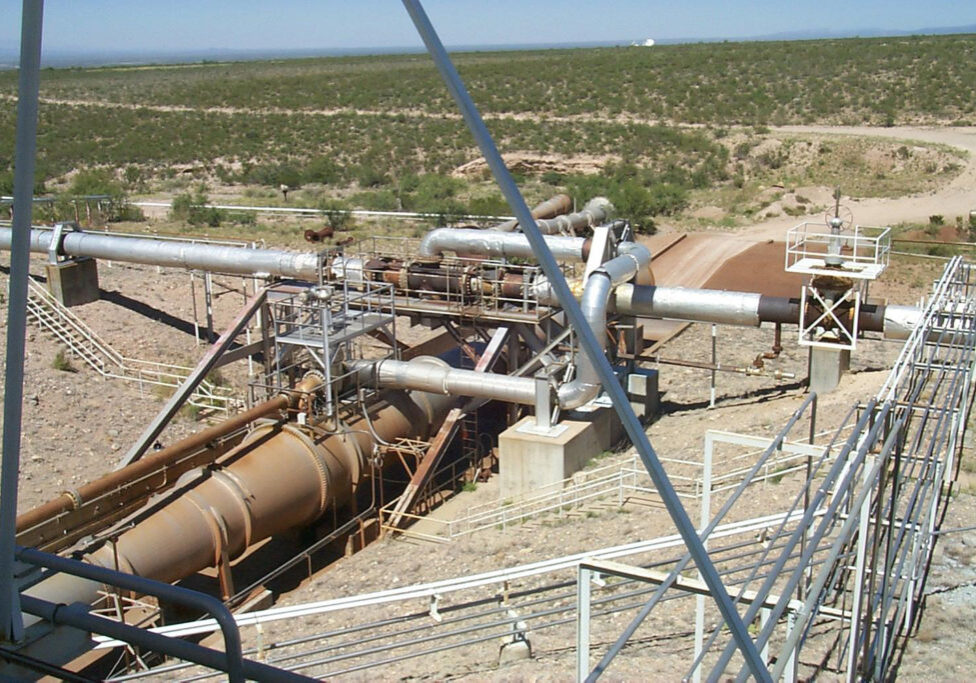White Sands Test Facility
NASA

Two test chambers at the NASA White Sands Test Facility are used to test rocket engines under simulated high altitude conditions. The test chambers are evacuated using extremely large steam ejectors, requiring approximately 1.8 million pph of 300 psi steam flow. The facilities are only operated for short periods of time, typically 20 minutes to an hour, on an irregular schedule throughout the year. The limited operation of the facility required that a unique steam generation system be provided, using liquid oxygen and isopropyl alcohol combustors with direct injection of water. This allows the system to go from cold conditions to full flow in less than one minute.
The steam distribution piping consists of approximately 500 feet of 30 inch pipe with 24 inch branches to the test chamber ejectors. The distribution system was designed and constructed in the 1960’s and had been modified several times to address problems caused by the extreme growth and stress experienced. Shah Smith & Associates, Inc. was charged with analyzing the piping system to determine if the design complied with current design codes, to evaluate alternatives for correcting system startup water hammer problems, and to prepare construction documents for replacement of the entire piping distribution system.
SSA prepared a computer model of the system and analyzed it using the CAESAR II stress analysis program. SSA determined that restraints added to the system to protect against startup water hammer were causing thermal expansion forces well above allowable stress levels. SSA developed a design for removing excess water from the system during startup and modified the piping expansion joints and loops to allow greater piping flexibility to accommodate the rapid thermal growth. The design addressed piping insulation problems, pipe support, restraint issues, and provided a phased schedule for upgrading the system without excessive test outages.
Site Owner
Location
Project Cost
$1,100,000
Project Completion
2003
Expertise
Central Plant
Federal Government



